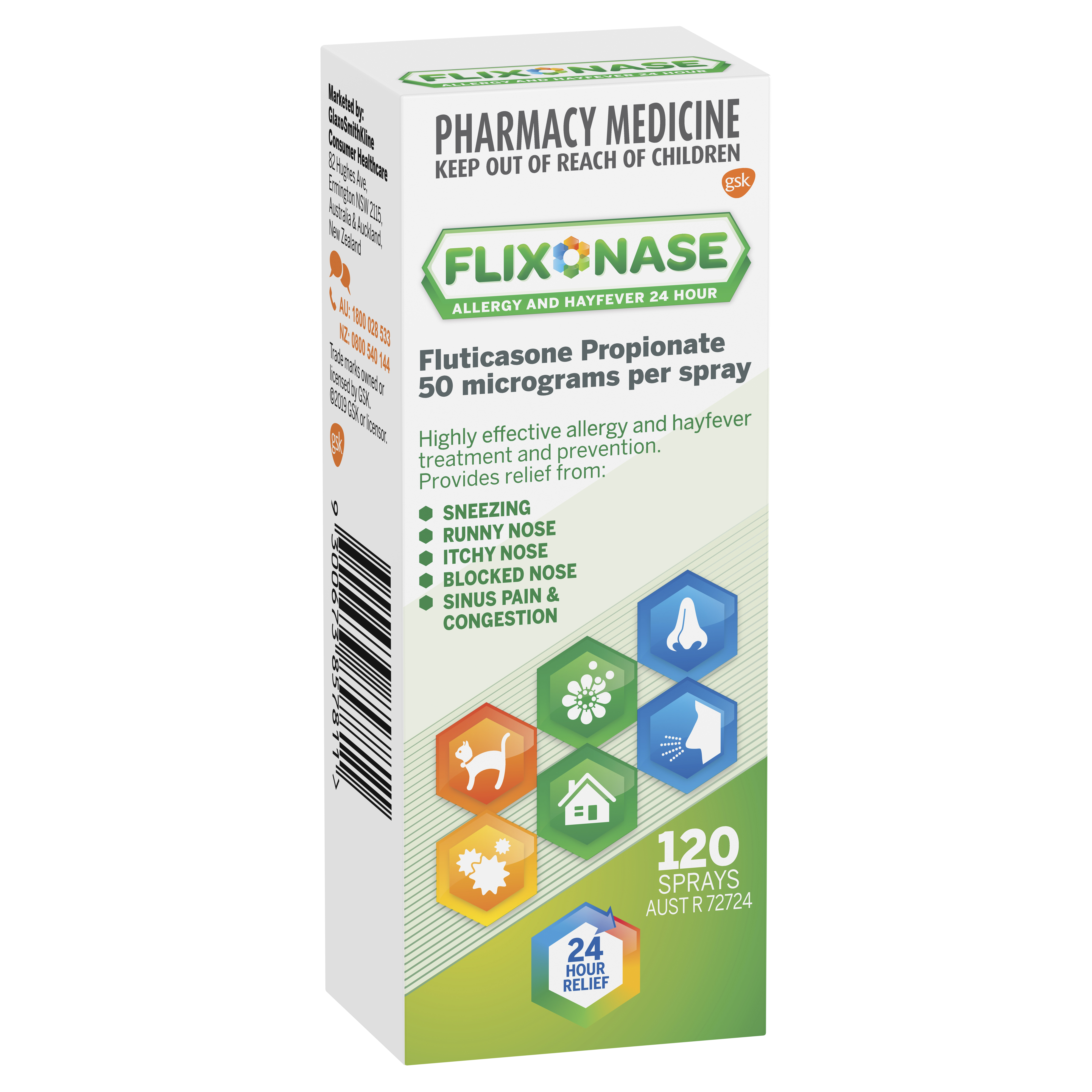Hayfever: Types and Symptom
Allergic rhinitis, commonly known as hayfever, has two different types: seasonal and perennial hayfever. Seasonal hayfever can be caused by outdoor wind-borne allergens like pollen from trees, weeds and grass. Perennial hayfever can occur year-round often caused by indoor allergens, such as dust mites, pet dander and indoor moulds.[1]
Hayfever is characterised by the following symptoms:
- Sneezing
- Runny nose
- Itchy nose
- Blocked nose
- Sinus pain and congestion
WHAT CAUSES OUR SYMPTOMS?
Allergens are allergy-causing particles that travel through the air. Below are the most common types of allergens.
- Animal allergens, minute airborne particles produced by pets like dogs or cats called “pet dander.”
- Indoor allergens, these include mould and particles from dust mites. These allergens are with us all year long.
- Tree pollen, occurs at certain times of the year and is especially prevalent in autumn.
- Outdoor allergens, these are the seasonal allergies that include pollen from grass and weeds.
COMMON WAYS TO TREAT HAYFEVER AND ALLERGIES
There are many popular methods of treatment. They work in different ways, but some are more effective than others.
Flixonase Nasal Spray - Works directly at the source to relieve your symptoms, targeting six key allergic substances.[2,3]
Anthistamine Tablets - Targets only one of the many allergic substances – histamine – that produce allergy symptoms.[4]
FLIXONASE HAYFEVER AND ALLERGY RELIEF
Flixonase Outperforms Antihistamine tablets and provides 24-hour, non-drowsy hayfever and allergy relief.[4,5,6]
Flixonase nasal spray works directly in the nose to relieve the worst allergy symptoms, including
- Sneezing
- Runny nose
- Itchy nose
- Blocked nose
- Sinus pain and congestion
Use as directed
Effectiveness is usually achieved after 3 or 4 days of continuous use.


Flixonase contains fluticasone propionate 50 mcg per spray for the prevention and treatment of allergic rhinitis including hayfever.
ALWAYS READ THE LABEL. Use only as directed. If symptoms persist see your healthcare professional.
Visit your local Blooms The Chemist and speak to your pharmacist for more information.
1 Yawn, Barbara (2006). Comparison of Once-Daily Intranasal Corticosteriods of the Treatment of Allergic Rhinitis: Are They All the Same? 8(1):23. 2 Bachert C & Geveart P, Allergy 1999;54 (Suppl 57):116-23. 3 Wiseman LR & Benfield P, Drugs 1997:53:885-607. 4 Australian Medicines Handbook 2016 AMH Pty Ltd; Adelaide. ^Antihistamine tablets. 5 Bousquet J et al. Allergy 2008;63 (Suppl 86):8-160. 6 Wallace DV et al. J Allergy Clin Immunol 2008;122:S1-84

